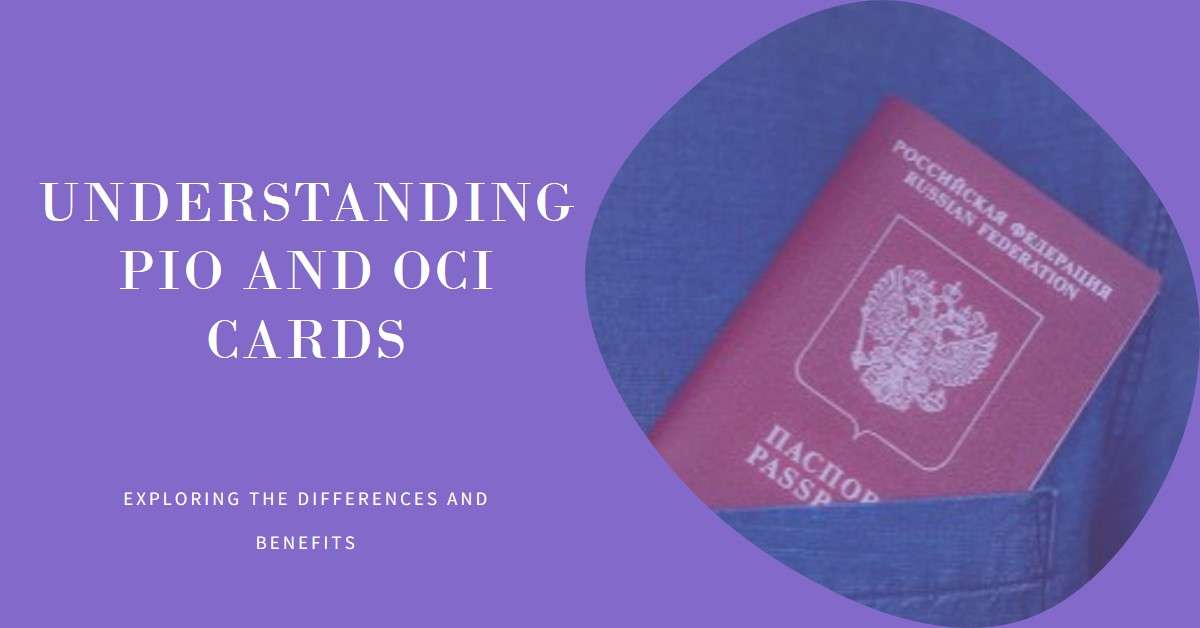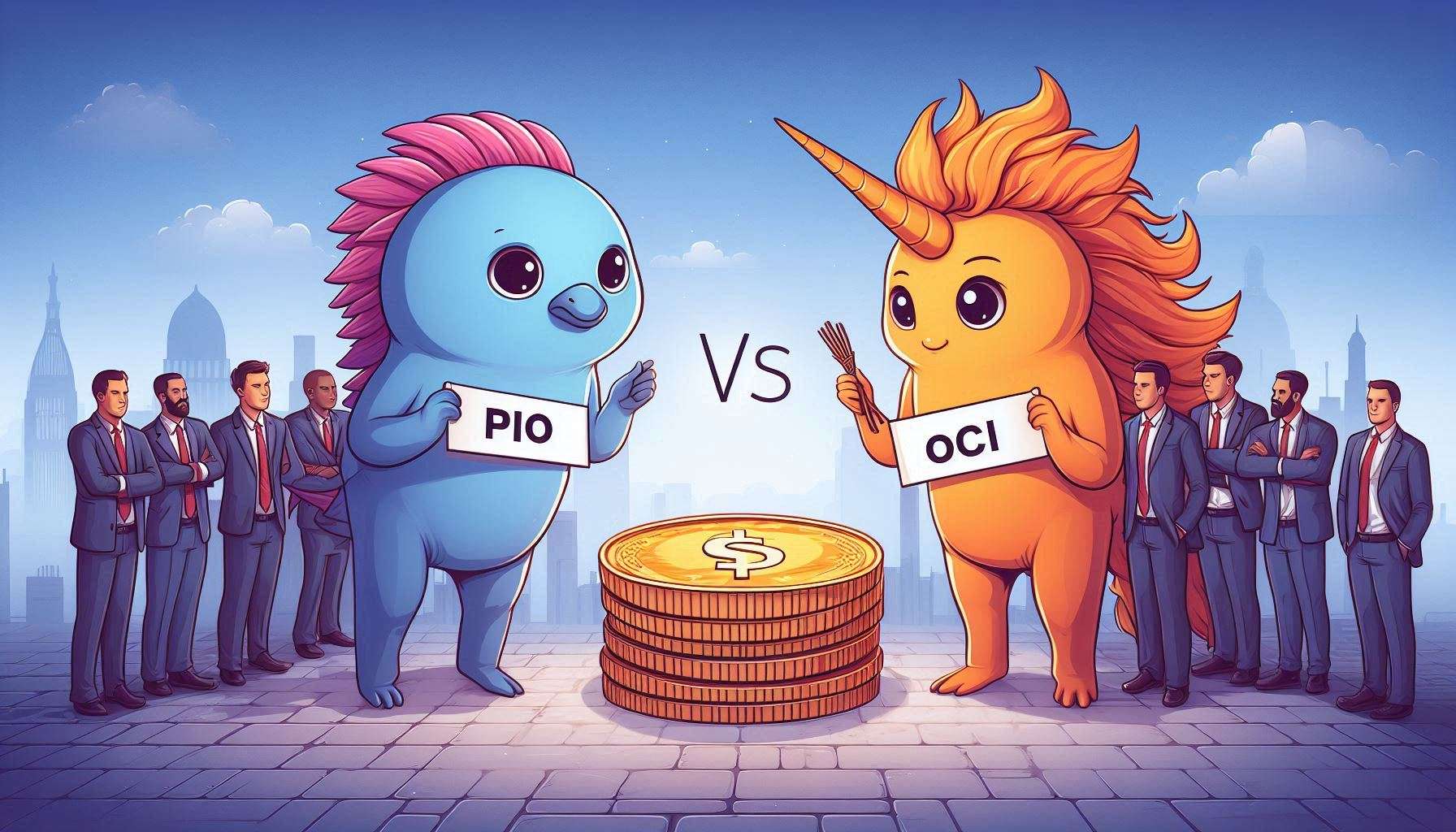PIO Card to OCI Card: Guide from the Consulate General of India
Contents
- 1 PIO Card to OCI Card: Guide from the Consulate General of India
- 1.1 Introduction to PIO and OCI Cards
- 1.2 What Are PIO and OCI Cards?
- 1.3 Introduction to PIO and OCI Cards by the Consulate General of India
- 1.4 Historical Context
- 1.5 Benefits of PIO and OCI Cards for Persons of Indian Origin
- 1.6 Key Features and Benefits
- 1.7 Step-by-Step Guide for PIO Card to OCI Card Conversion at the Embassy of India
- 1.8 Application Process and Requirements
- 1.9 Conversion from PIO to OCI
- 1.10 Legal Rights and Regulations for Overseas Citizens of India
- 1.11 Practical Considerations
- 1.12 Legal Framework and Recent Policies
- 1.13 Conclusion
- 1.14 FAQs
- 1.15 Q: What happens if I don’t convert my PIO to OCI?
- 1.16 Q: Can OCI holders buy agricultural property?
- 1.17 Q: How long does it take to convert PIO to OCI?
- 1.18 Q: What’s the difference between a PIO card and an OCI card?
- 1.19 Q: What are the benefits of holding a PIO card?
- 1.20 Q: Can I convert my PIO card to an OCI card?
- 1.21 Q: How does the OCI card benefit me as a citizen of India?
- 1.22 Q: What’s the procedure to apply for an OCI card?
- 1.23 Q: Are there any restrictions for PIO and OCI cardholders?
- 1.24 Q: How long can I stay in India with an OCI card?
- 1.25 Q: What happens if I want to become an Indian citizen after holding an OCI?
- 1.26 Q: Can an OCI cardholder work in India?
- 1.27 Q: Are there different statuses for PIO and OCI holders?
Understand consider all PIO cards when applying for residency. PIO cardholder does not require an employment visa to travel to India became a part of India..s may need to apply for a new PIO if their card has expired.ing the Difference Between PIO and OCI: OCI vs PIO
Navigating the complex world of Indian overseas citizenship? If you’re confused about the difference between PIO (Person of Indian Origin) and OCI (Overseas Citizen of India) cards, you’re not alone. The transition from PIO to OCI has left many Indo-origin individuals wondering which documentation best suits their needs. 🤔
As India strengthens its global connections, understanding the key differences between these two documents is crucial for maintaining your ties with the motherland. While the PIO scheme has been phased out, converting to OCI remains a pressing concern for many. Whether you’re looking to reconnect with your roots, invest, or work in India, having the right documentation can make all the difference.
Let’s demystify these credentials by exploring their features, benefits, application processes, and the transition from PIO to OCI. We’ll also dive into practical considerations and legal frameworks to help you make an informed decision. 🇮🇳
Introduction to PIO and OCI Cards
Hey there! So, let’s talk about the PIO and OCI cards. If you’ve got a PIO card, you’ll want to pay attention because by India till 2024, those hand written PIO cards are officially invalid. The good news is that the Indian government has announced they’ll accept PIO cards as valid travel documents until December 31, but after that, you might need to obtain appropriate visa if you haven’t upgraded to an OCI card. So if you’re, say, completing 50 years of age or a new passport is issued, you might have to notify folks at the VFS and think about applying for conversion to OCI.
Just a heads-up, this extension of timeline is subject to a few conditions, and the existing OCI card holders are in the clear, while cardholders may have to obtain the appropriate visa from Indian jurisdiction if they don’t act soon. If you’ve got a valid foreign passport, you should definitely look into getting that re-issuance of OCI card sorted out. Don’t wait for the big deadline to be notified; keep those OCI services handy for a smooth journey through the Indian immigration check!
What Are PIO and OCI Cards?

If you’ve ever wondered about the OCI and PIO cards, you’re not alone! These documents are super important for NRI (Non-Resident Indians) and foreign citizens of Indian origin who want to keep a connection with their roots. So, what’s the deal? The PIO card holder gets to enjoy certain perks while visiting India, like not having to deal with a long visa to visit India process. However, with the government of India act updating things, many are switching from a PIO card to OCI card for better benefits.
Now, one of the main benefits of PIO status is that you can live in India without worrying much about legal hassles, plus you can own property! But if you want to dive deeper, the OCI card holders can stay in India indefinitely and even apply for things like a PAN card. So, it’s pretty chill. Just remember, if you were born in India or held an Indian passport, you might find the process a bit different due to the key differences between PIO and OCI.
Also, let’s talk about those restricted areas in India that might require a special pass if you’re planning to visit. The NRI quota for schools or colleges is a big deal, especially if you’re thinking about an education visa. Just keep in mind that PIO card holders can’t get all the perks of OCI status, so if you plan to stay long-term, it might be worth your while to switch over. So whether you’re looking to reside in India or just make a quick trip, knowing the PIO cardholder does not require a visa for short visits. differences between OCI and PIO can really help you navigate your journey home.
Definition and Purpose of The PIO Card allows foreign nationals to enjoy benefits like visa-free travel and the ability to apply for an Indian passport at any point.s
The Person of Indian Origin (PIO) card was a document issued by the Indian government to people of Indian origin residing abroad. Though discontinued in 2015, understanding PIO cards is still relevant for historical context and conversion to OCI status. It granted certain privileges, such as visa-free entry to India and rights in economic and educational matters.
Introduction to PIO and OCI Cards by the Consulate General of India
Hey there! So, let’s chat about the PIO and OCI cards and what the Consulate General of India has got to say about them. If you’re an Indian origin living abroad, you might wanna know that they’re currently taking a closer look at the conversion of PIO card holders since all PIO cards invalid now, unless you’ve got a valid foreign passport or a valid travel document till a specific date. The consulate is all set to accept all person of indian origin, provided you’re subject to the condition that you obtained your cards before the deadline is notified.
As per the latest updates, it’s important to note that hand written PIO cards invalid are not acceptable anymore. For those who need to visit certain areas in India, you might have to consider getting a protected area permit, especially if your destination is a bit off the beaten path. If you’re curious about the specifics of details on OCI, check out the external links given on the consulate’s website. They are, after all, responsible for the information and can help you navigate any questions you might have!
Historical Context
Understanding the evolution of these documents is key:
| Year | Development |
| 2002 |
Introduction of PIO Card Scheme
|
| 2005 |
Launch of OCI Program
|
| 2015 |
Merger of PIO into OCI Scheme
|
| 2016 |
Complete Phase-out of PIO Cards
|
This progression highlights India’s evolving approach toward its global diaspora, culminating in streamlined and comprehensive OCI benefits.
Benefits of PIO and OCI Cards for Persons of Indian Origin
Hey there! If you’re a Person of Indian Origin, getting a PIO or OCI card can be a game changer. These cards come with some cool perks, especially if you’re holding a valid foreign passport. You can skip the hassle of visa applications every time you want to visit India; just flash your card and you’re good to go! Plus, the Indian Bureau of Immigration has notified that they will consider all PIO cards valid till December 31, keeping your travels smooth.
But that’s not all! Having a valid PIO card means you can even dive into plantation properties without a hitch. You can visit any place which falls within the territory that became India after completing 20 years of age, giving you a sense of home. Just remember, if you’re planning to hit up any protected areas, you may have to obtain appropriate permits. Check out the links given in its website for all the deets!
Key Features and Benefits
If you’re looking to stay connected with India as defined, the Overseas Citizenship of India (OCI) is something you should definitely check out, especially if you were born in India as defined by the Constitution of India! For those who have became part of India through family ties or ancestry, registering as an OCI could unlock some amazing perks. Once you’re registered as OCI, you basically get a free pass as a term NRI. You become eligible to enter India as an eligible to become an Indian citizen. as an eligible to become an Indian citizen. whenever you want, and guess what? OCI card holders can visit India without needing a visa! That’s such a win for anyone living outside India.
Now, the difference between NRI (Non-Resident Indian) and OCI is pretty important. While NRIs have some benefits, if you’re an OCI, you really get the gold card status! For example, you don’t have to reapply every time you want to visit, unlike a PIO cardholder, who may still continue to consider all PIO benefits. require a visa to visit. And remember, to get the full benefits of OCI status, you have to apply for an OCI card and sticker which lasts for a solid OCI for 5 years. Just a heads up: India does not permit dual citizenship, so keep that in mind if you’re thinking of jumping in deeper and want to become a citizen of India. Overall, grabbing an OCI card is an awesome way to maintain that connection with India and enjoy the perks that come with it!
Rights of PIO Cardholders
- PIO cards were phased out in 2015, but for historical reference, these were their key rights:
- Visa-Free Entry: Allowed visa-free entry to India for 15 years from the date of issuance of the PIO card is an important consideration for applicants..
- Education and Employment: No separate visa was required for student or employment purposes.
- Parity with NRIs: PIO cardholders had parity with NRIs in economic and educational matters.
- Property Rights: PIO holders could purchase residential and commercial property but were restricted from buying agricultural land, which is one of the key differences between the OCI and PIO.
Comparison Table: Visa-Free Travel Benefits
| Aspect | PIO Card | OCI Card |
| Validity | 15 years |
Lifetime benefits became a part of India for PIO cardholders.
|
| Entry/Exit | Multiple entries | Multiple entries |
| Stay Duration | Up to 180 days of visa-free travel to India for PIO cardholders may be a significant advantage. | Unlimited |
| Registration | Required for >180 days | Not required |
Step-by-Step Guide for PIO Card to OCI Card Conversion at the Embassy of India
If you’re looking to convert your PIO card to an OCI card at the Embassy of India, this step-by-step guide has got you covered! First, make sure you have your valid foreign passport handy, as you’ll need it for the process. The good news is that if you’re currently in India till December 31, you can complete this conversion without any hitches. If your passport is issued after completing 20 years of age, you’ll also need to obtain an appropriate visa from the Indian authorities if you plan to stay long-term.
Now, about those handwritten PIO cards: the international civil aviation standards have made them a thing of the past, and the immigration will accept only the OCI cards moving forward. As for the process, don’t forget to check if you require a protected area permit if you’re heading to certain regions. Lastly, keep in mind that VFS has been informed about the new procedures, so check in with them for the latest updates! This conversion is all about streamlining your experience and ensuring you’ve got the right documents for your time in India.
Application Process and Requirements
Eligibility Criteria
For PIO:
- Former Indian citizens or their descendants.
- Spouse of an Indian citizen or PIO cardholder.
For OCI:
- Former Indian citizens or their descendants (up to great-grandchildren).
- Spouse of an Indian citizen or OCI cardholder (married for at least 2 years).
Required Documentation
| Document | PIO Requirements |
OCI Requirements
|
| Identity Proof | Valid Passport |
Valid Passport (6+ months validity)
|
| Photos | 4 recent passport-size |
2 recent passport-size photos are required when applying for a new PIO card.
|
| Proof of Origin | Birth certificates, Indian passport, or citizenship proof |
Similar to PIO requirements
|
| Address Proof | Utility bills or bank statements | Same |
| Marriage Certificate | Required for spouse category |
Required for spouse category
|
Conversion from PIO to OCI
The Indian government mandates all PIO cardholders to convert to OCI cards. Here’s how:
Steps for Conversion
- Online Application:
- Visit the official Indian FRRO website.
- Complete and upload the required documents.
- Document Compilation:
- PIO card (original and copy).
- Valid passport.
- Address proof.
- Submission and Biometric Data for OCI applications are crucial for those who have permanently resided in India.
- Book an appointment with the nearest Indian Mission.
- Submit documents and provide biometrics.
- Timeline and Costs:
- Processing time: 2-3 weeks.
- Conversion cost: $25 (basic fee).
Legal Rights and Regulations for Overseas Citizens of India
So, if you’re an Overseas Citizen of India (OCI) cardholder, there are some legal rights and regulations you really need to keep in mind, especially since they affect your day-to-day life. First off, make sure you have a valid foreign passport along with your OCI card, as that’s key for any travel plans you’re cooking up. If your passport’s about to expire, you might be wondering about the process, which is where time a new passport comes into play—it’ll need to be done right! You can’t forget about needing to obtain appropriate visa from Indian authorities when planning a visit back home, either.
Now, switching gears to paperwork, if you’ve got a hand written PIO card, just know that it’s becoming outdated. They’re in the process of making hand written PIO cards obsolete, thanks to new regulations notified by the International Civil Aviation Organization. And if you’re considering traveling to certain regions, be aware that some areas require protected area permit—so don’t overlook that! Keep in mind that your age and once after completing certain requirements, you might have to wait years after registration to maintain rights in India. Finally, you will be informed that VFS services are your go-to for visa applications and other documentation. Keep these pointers in mind, and you’ll stay on top of things!
Practical Considerations
Travel Implications
| Aspect | PIO Card | OCI Card |
| Registration | Required for >180 days | Not required |
| Visa-Free Travel | Limited to 15 years | Lifetime |
Property and Business Rights
As an OCI cardholder, you can:
- Purchase residential and commercial property.
- Start businesses in permitted sectors.
- Open NRE/NRO accounts.
Restrictions remain on agricultural land purchases.
Legal Framework and Recent Policies
Current Regulations
The OCI scheme is governed by Section 7A of the Citizenship Act, 1955. Recent changes include:
- Merger of PIO and OCI schemes in 2015.
- Enhanced security features for OCI cards.
Future Amendments
- Digital integration for seamless application processes.
- Simplified renewal procedures for new passports.
Conclusion
Switching from PIO to OCI unlocks lifelong benefits, including visa-free travel, broader rights, and simplified processes. With the streamlined application system, maintaining your connection with India has never been easier.
Need Help? Contact Desmo Travel!
Desmo Travel has years of expertise in assisting with Indian overseas documentation. For personalized assistance with your OCI application or conversion, including how to apply for a PIO card, reach out to us today!
📞 Call Us: (732) 234-3740
📧 Email Us: info@desmotravel.com is available for inquiries regarding PIO and OCI differences.
📍 Visit Us: to learn more about the differences between the OCI and PIO cards. 56 Weathervane Cir, Cream Ridge, NJ 08514
Additional Support with Desmo Travel
At Desmo Travel, we understand the challenges of navigating complex documentation like PIO to OCI conversions. As a trusted travel agency, we don’t just help you plan your trips; we also assist with crucial services for our clients of Indian origin, including guidance on converting your PIO card to OCI. Whether you need help understanding the process, compiling documents, or tracking your application, our experienced team is here to make it stress-free. Stay connected to your roots with our expert support and ensure seamless travel to India.
Disclaimer:
The information provided in this blog is for general informational purposes only. While we strive to keep the content accurate and up-to-date, Desmo Travel is not acting on behalf of any government agency or official entity. We recommend verifying all details with the appropriate Indian authorities or legal advisors before proceeding with any documentation or application processes. Desmo Travel assumes no liability for any inaccuracies or reliance on the information provided.
FAQs
Q: What happens if I don’t convert my PIO to OCI?
A: PIO cards are no longer valid. You must convert to OCI to continue enjoying travel and residency benefits in India.
Q: Can OCI holders buy agricultural property?
A: No, OCI holders are restricted from purchasing agricultural land.
Q: How long does it take to convert PIO to OCI?
A: Processing typically takes 2-3 weeks after document submission.
Q: What’s the difference between a PIO card and an OCI card?
A: The main difference between PIO and OCI is the scope of benefits and rights. PIO cardholders had certain privileges but they’re now phased out as of January 2015; however, we continue to consider all PIO cards for specific benefits. OCI cardholders enjoy indefinite stay in India, no visa requirement for travel, and are treated like Indian citizens (except for voting and certain government jobs).
Q: What are the benefits of holding a PIO card?
A: PIO cardholders previously enjoyed multiple benefits like visa-free travel to India for a period of up to 180 days and were able to work in India, which became a part of India. However, since PIO cards are no longer issued, it’s better to switch to an OCI card for those benefits.
Q: Can I convert my PIO card to an OCI card?
A: Yes, you can! The Indian government provides a straightforward process for converting your PIO card to an OCI card. It’s a good move to ensure you have the most up-to-date status and benefits, especially if you have permanently resided in India.
Q: How does the OCI card benefit me as a citizen of India?
A: As an OCI cardholder, you get to stay in India indefinitely, visit without needing a visa, and even own property in India. This is a huge perk for those who want to stay connected with their roots!
Q: What’s the procedure to apply for an OCI card?
A: To apply for an OCI card, you’ll need to fill out the application form online, gather your documents (like a passport and proof of your Indian heritage), and submit it to the Embassy of India. They’ll guide you through the rest!
Q: Are there any restrictions for PIO and OCI cardholders?
A: Yes, while both have great benefits, PIO and OCI cardholders can’t vote or hold certain government jobs in India. Also, OCI cardholders might have some restrictions on residing in certain areas, like restricted zones.
Q: How long can I stay in India with an OCI card?
A: OCI cardholders can stay in India indefinitely! This means no more worries about overstaying or needing to renew a visa, which is a massive relief for frequent travelers.
Q: What happens if I want to become an Indian citizen after holding an OCI?
A: If you wish to apply for Indian citizenship after being an OCI cardholder, you can do so. However, there may be specific residency requirements you need to fulfill, so it’s best to check with the Embassy of India for detailed guidelines.
Q: Can an OCI cardholder work in India?
A: Absolutely! OCI cardholders have the right to work in India just like Indian citizens, which is fantastic for those looking to explore job opportunities in the country.
Q: Are there different statuses for PIO and OCI holders?
A: Yes, PIO and OCI statuses are different. While PIO cardholders had certain privileges, they’ve been merged into the OCI category now, which has more comprehensive benefits for overseas citizens of India. It’s definitely worth transitioning to an OCI for better advantages!

























